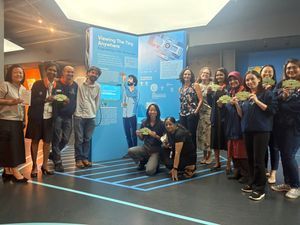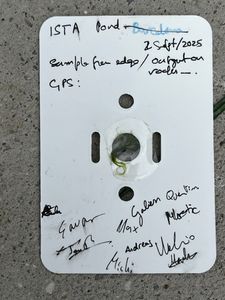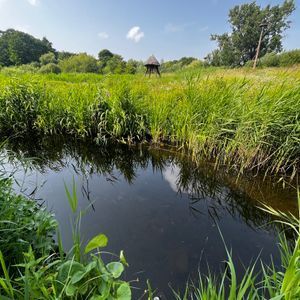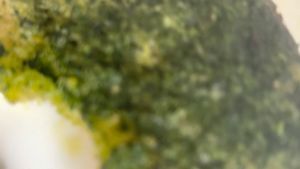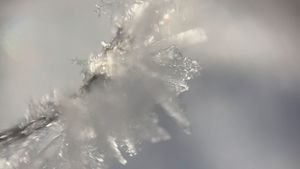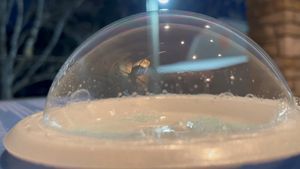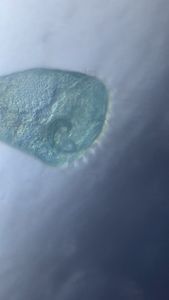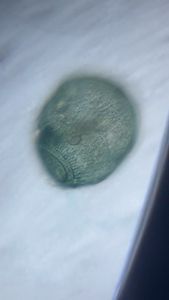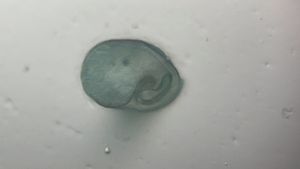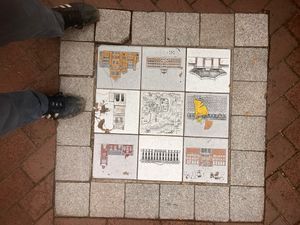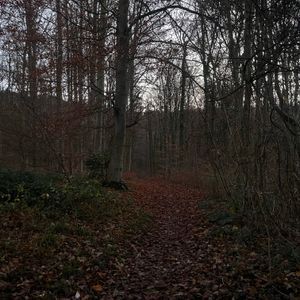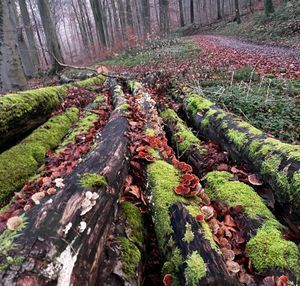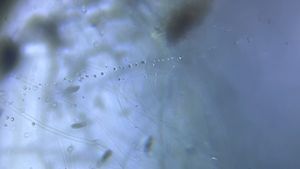Gliding Cyanobacteria – duck pond
 Apr 10, 2017 • 10:50 PM UTC
Apr 10, 2017 • 10:50 PM UTC Unknown Location
Unknown Location 140x Magnification
140x Magnification Microorganisms
Microorganisms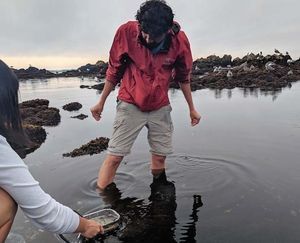
Manu Prakash
I am a faculty at Stanford and run the Prakash Lab at Department of Bioengineering at Stanford University. Foldscope community is at the heart of our Frugal Science movement - and I can not tell you how proud I am of this community and grassroots movement. Find our work here: http://prakashlab.stanford.edu
266posts
1192comments
42locations

Continuing on samples from the duck pond; here is a video of a gliding Cyanobacteria (possibly oscillatoria). Many fascinating things to see here; speciallyvthe slpw gliding motility which has often been a puzzle in science to uncover. What’s more fascinating is that this gliding trajectory is chiral – and the long filamentous cells are also spinning along its long axis. That might not be very clear in this first video; but as a later time – I will post another data set with the spinning clearly visible.
I am using a “basic” 140x foldscope with a table lamp as a light module. I have some of my foldscope parts to Scott; so I need to make a new light module. But as you can see, using table lamp has several advantages 🙂 – including darkfield.
Here is another view of these gliding filaments; with more ciliates making an appearance.
Here is another view of these gliding filaments; with more ciliates making an appearance.
And another view of a stuck filament.
Finally; here is evidence for rotation. Here the gliding filaments is carrying a dead diatom fossile; allowing us to see all the rotation in full glory.
Cheers
Manu
Manu
Sign in to commentNobody has commented yet... Share your thoughts with the author and start the discussion!
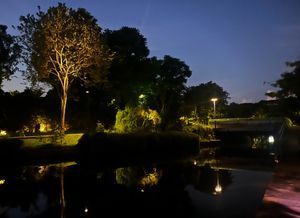
 0 Applause
0 Applause 0 Comments
0 Comments